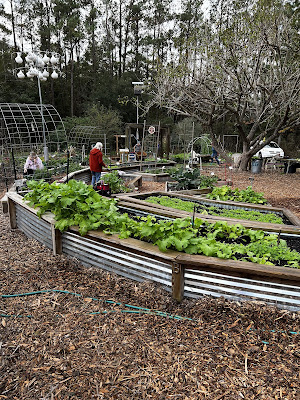We’ve been trying to grow pigeon peas in our food forest at the VegHeadz garden. The first attempt last year was a total failure. This year the peas have flourished, but they have not yet formed pods. It is said they should be harvested after the first frost, but they better get busy if they are going to make pods in time this year.
We’ve mulched the roots heavily in an attempt to help them make it through the winter in our north Florida area. More information can be found here: https://plants.usda.gov/DocumentLibrary/plantguide/pdf/pg_caca27.pdf
The plants are about 8 feet tall but have remained erect for the most part. Strangely we have a plant which blooms white which is not mentioned in the literature about pigeon peas. All the other plants have yellow blooms which is typical. It’ll be interesting to see if their Pods are any different also.
 |
| Atypical white blooms on Pigeon peas |
Many varieties of fall greens and salad vegetables were harvested today, and preparation for constructing the new grape arbor proceeds apace, but the major effort today was mulching with the the very nice finely chopped mulch delivered last week. It appears to be from tree trimming as there are green leaves mixed in with the wood chips. The green leaves and wood chips will start composting a little faster than just plain dry wood chips, and the composting process will provide a few degrees of warmth wherever the mulch is placed which should help our plants weather cold snaps nicely.
 |
| Mary Janik |
 |
| Carole Hayes and Peggy McDonald |
 |
| Carole is getting the job done |
The food forest is gaining maturity with plants filling out to increase their spread and shade out weeds. We’re still adding new things, and this fall we have multiple types of cover crops in bare spots to build soil and discourage weeds.



No comments:
Post a Comment